How Experimental X-Planes Changed Aviation as We Know It
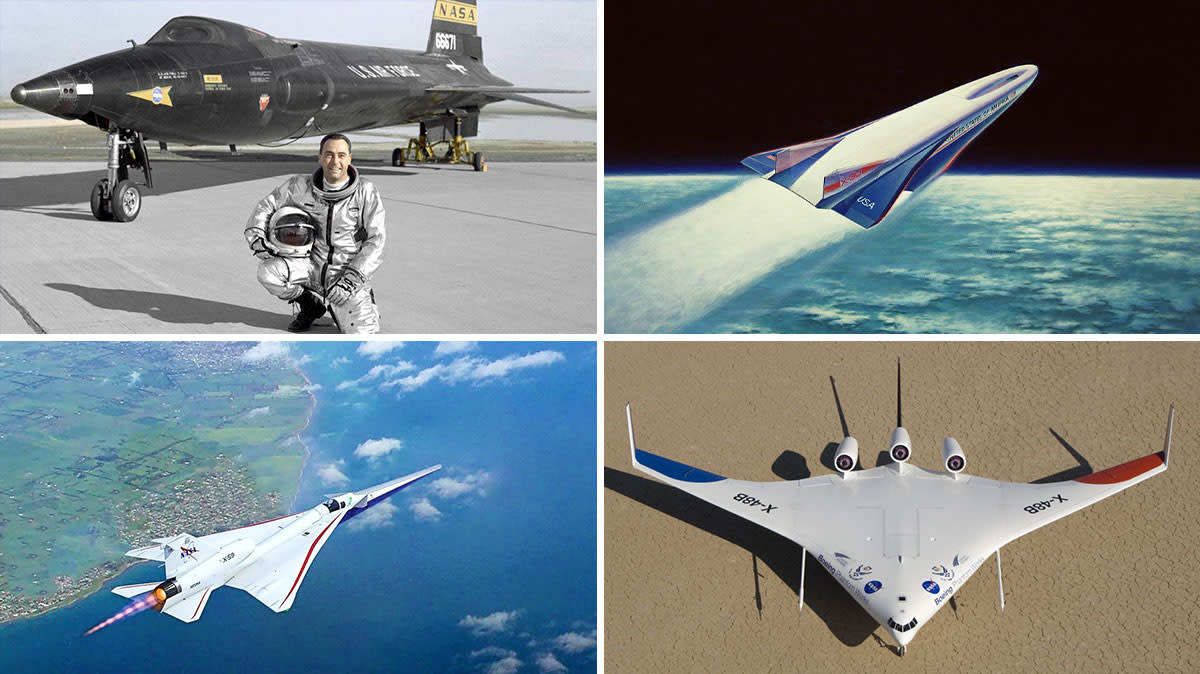
The R&D zone within an aircraft factory is often shrouded in mystery, bearing top secret fruit. But some of the most innovative technologies to streak through the skies have sprung from collaborations with the likes of NASA and its predecessor, the National Advisory Committee for Aeronautics (NACA). These “X-planes”—so called because they start with the letter “X” standing for “experimental” followed by a number—have had a major impact on our daily lives.
The X-planes concept started in 1944, as a joint program between the National Advisory Council of Aeronautics (NACA), the U.S. Navy and U.S. Army Air Force. NACA later became NASA and the US Air Force dropped the Army from its name. The first experimental aircraft program, designed to go supersonic, began in 1945, with the first operational flight in 1947 at Muroc Air Force Base (now Edwards) in California. Edwards has since become the go-to flight location for the majority of X-plane tests.
More from Robb Report
These Next-Gen Supersonic Jets Want to Replace the Concorde. Will They Ever Take Off?
This Bonkers High-Speed X-Plane Combines a Jet's Speed With an VTOL's Agility
Capt. Chuck Yeager’s famous sound-barrier breaking flight was chronicled in The Right Stuff. The X-1 also marked the beginning of collaborations for experimental aircraft between the government and private corporations.
There have been 66 X-plane designators over the years, though a number of X-planes have been built in a series. Many have been piloted, but many others have been unmanned, including those designed as missiles. Not all have been sleek speed demons. The X-25 Bensen, launched in 1955, was a cockpit-less auto-gyro, designed to retrieve downed pilots, looked like it was built in a garage. And the X-20 DynaSoar was a reusable spaceplane concept that predated the 1980s space shuttles. A number like the X-20 remained concepts and were never built.
The X-planes that launch today typically “demonstrate a technology to solve a problem,” says David Richwine, low boom demonstrator deputy product manager for technology for NASA, who has insight into several X-plane programs. The secrecy is important but it’s not the defining factor—as many of today’s top X programs are coming together in plain sight.
The current roster of X-designated projects reveal up-and-coming aircraft demonstrating critical technologies that will certainly take their place in history. Here are four historic examples of out-of-the-box aviation thinking and four recent and current aircraft that promise to change the way we fly in the future.
Best of Robb Report
Sign up for Robb Report's Newsletter. For the latest news, follow us on Facebook, Twitter, and Instagram.
Click here to read the full article.
X-1: Breaking the Sound Barrier
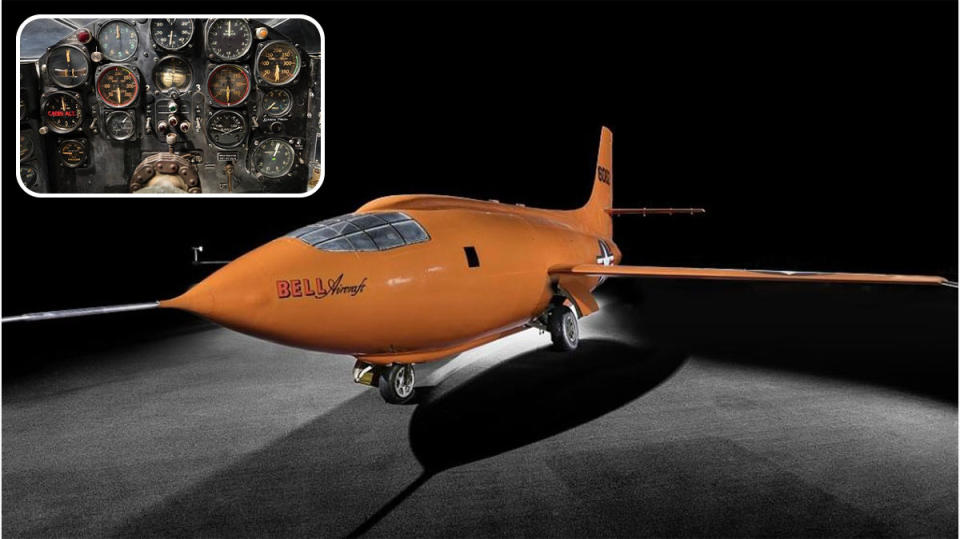
Peeling back the history of X-planes, the first is arguably the most famous. The Bell X-1 was the first to break the sound barrier, under the command of then-Capt. Charles E. “Chuck” Yeager, in 1947. He nicknamed the plane “Glamorous Glennis” after his wife.
The X-1 was the very first government/industry aircraft project designed to be truly experimental, and in the beginning it was developed by Bell in concert with the U.S. Air Force and NACA (predecessor to NASA) to investigate the transonic speed range and subsequent aircraft performance—with just the outside hope that they’d go supersonic.
“They didn’t know what they would find,” says Robert van der Linden, commercial and special purpose aircraft curator for the Smithsonian National Air and Space Museum.
In other words, the inventors were concerned that the aircraft might break apart upon reaching Mach 1 (about 761 mph at sea level and standard temperatures). “They were attempting to answer existing questions,” says Van der Linden. “Just imagine, they flew the X-1 just 44 years after the Wright brothers first flew.”
X-15: Fastest Airplane Ever
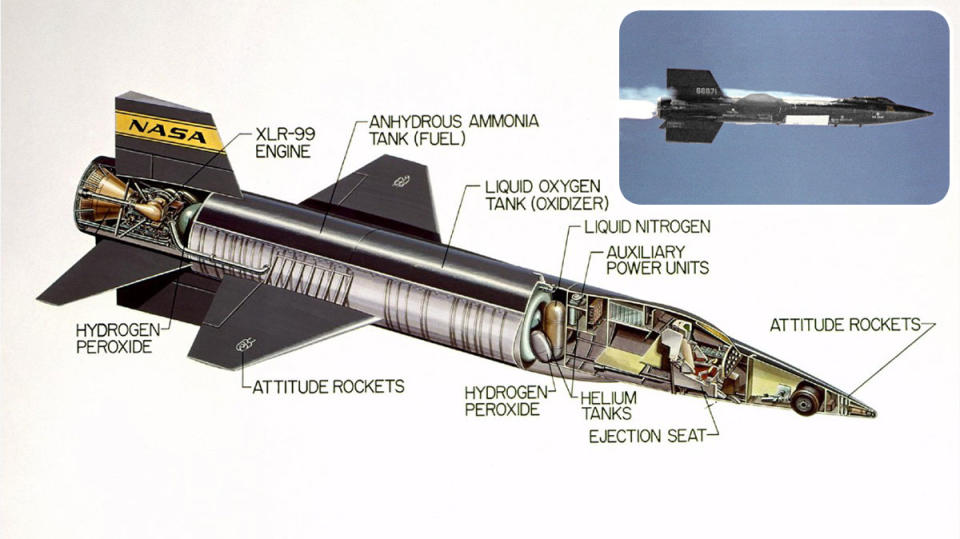
In 1959, North America rolled out its own top secret—at the time—research aircraft from a hangar at Wendover Air Force Base in Utah. With a remit to test the frontiers of flight well beyond the sonic boom, the X-15 series delivered in spades. It was carried aloft and launched from a B-52 Superfortress into a test corridor that ended at Edwards Air Force Base in Mojave, California, and became the first aircraft to go hypersonic—faster than Mach 4, 5, and 6 in quick succession.
The 31,276-pound X-15A wasn’t all that big—just a 22-foot wingspan, a 50-foot length, and standing just under 14 feet tall—but it clocked along at a top recorded speed of 4,520 mph (7,274 km/h) or Mach 6.7. Pilot William J. Knight made that flight on October 3, 1967 at 102,100 feet msl—setting a record for crewed, powered aircraft that still stands to this day. “It first flew in 1959, and well over a half a century later, it’s still the world’s fastest piloted aircraft,” says van der Linden. “It was supposed to hit Mach 7.”
Hypersonic flight is markedly different than merely going supersonic, making the X-15 “one of the most successful flight research programs ever,” according to van der Linden. From 199 flights, the program generated thousands of pages of reports. Other technologies derived from the program—for one, since it flew too high to rely upon traditional control surfaces, the X-15 used a reaction control system that aimed thrusters to maneuver the missile-like aircraft.
“A lot of what was done on the X-15 was carried over to the space shuttle—the shuttle wasn’t powered, but it was hypersonic when it re-entered the the atmosphere and could not have been successful without what they learned from the X-15,” van der Linden adds.
The SR-71 Blackbird made for a real-world follow-on to the X-15—it chugged along at 2,275 mph or Mach 3.4 during flight test—but it could keep that up for extended periods of time aloft, proving even more mission-capable than its hypersonic parent. With a first flight in 1964 and an entry into service in 1966, the SR-71 and its variants saw extensive use in both research and military reconnaissance applications until it was retired for good in 1998.
Also designed in part from lessons learned from the X series program: Concorde. “It can go 2,000 miles at Mach 2—that’s amazing,” says van der Linden. “A jet fighter can do Mach 2 for a short period of time—but not long.”
X-30: First Passenger Space Liner Concept
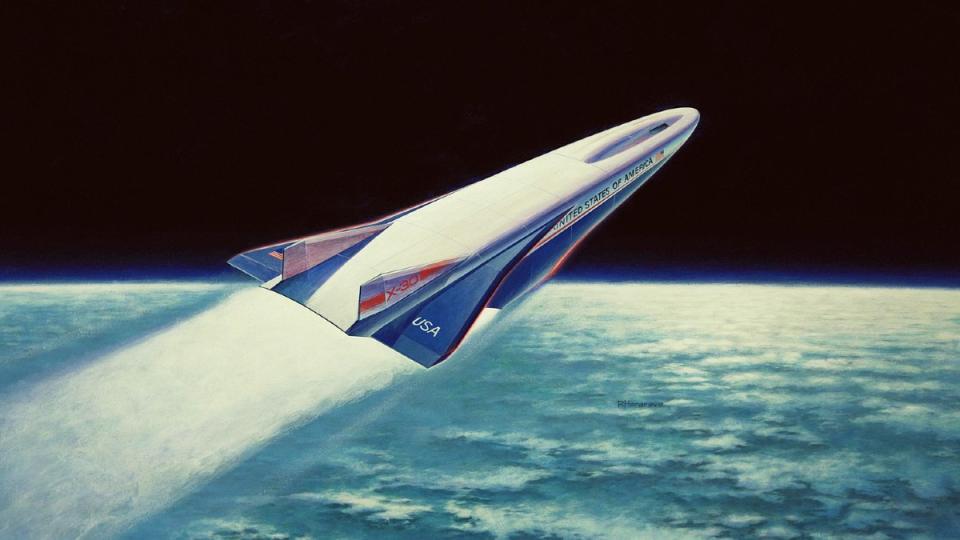
The Rockwell X-30 was designed as a single-stage-to-orbit spacecraft and passenger space liner that was started in 1986. The aircraft was an advanced technology demonstrator, with a two-pilot cockpit, but the eventual goal was to create a hypersonic passenger liner (think the Orient Express on steroids) that could fly from Washington to Tokyo in two hours. The concept, which faced many technical difficulties, was cancelled in the early 1990s before a prototype was finished. Since then, Virgin Galactic, Blue Origin, and SpaceX have resurrected the idea in different forms.
X-48: Blended-Wing Body Technology Revealed
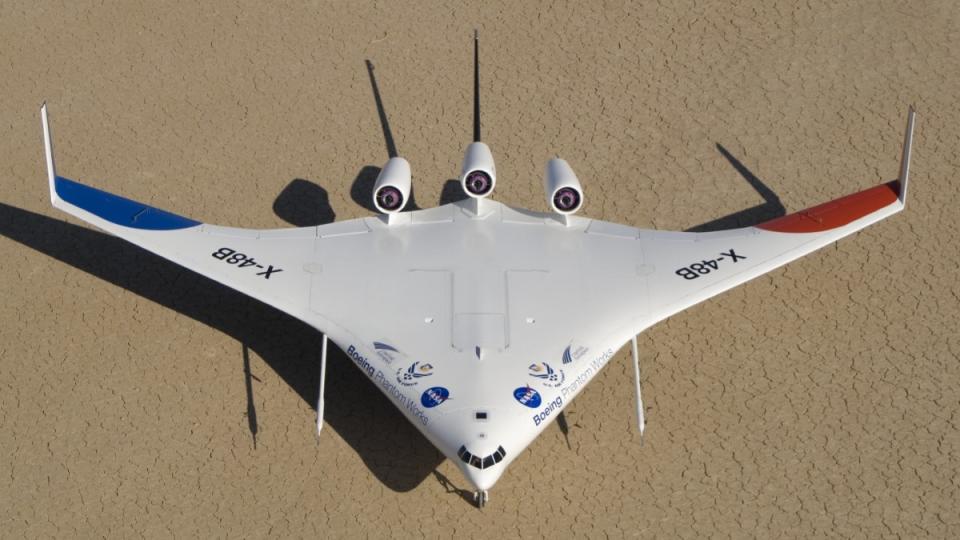
The Boeing X-48 was designed to test the characteristics of a blended wing body aircraft. The BWB concept has structural, aerodynamic, and operating efficiencies that deliver longer range and better fuel economy over traditional fuselage-and-wing designs. Two examples of the X-48 were built and flight testing began in 2007. A third version, called the X-48C, was tested from August 2012 through April 2013. NASA and Boeing plan to develop a larger BWB demonstrator.
X-57: Electric Aircraft Potential
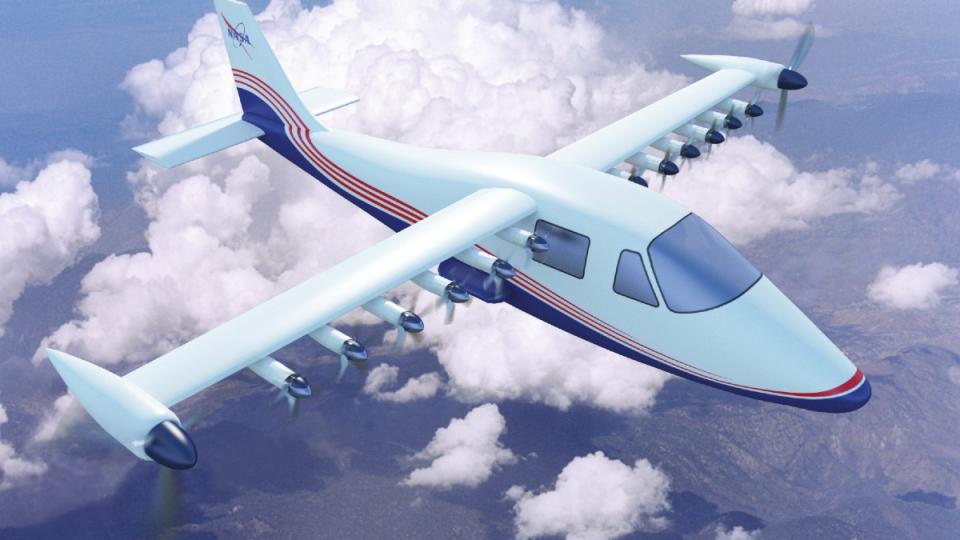
The X-57 Maxwell was developed by NASA to demonstrate electric propulsion technology. The space agency replaced the wings on a twin-engine Tecnam P2006T, installing 18 electric motors and propellers on each wing. The first flight of the X-57 was scheduled to take place last year, but the program was cancelled due to problems with the propulsion system. The zero-emissions X-57 concept wasn’t a wasted effort: Private start-ups have been working on electric aircraft variants, with the aiming of going into commercial service.
X-59: Lowering the Boom
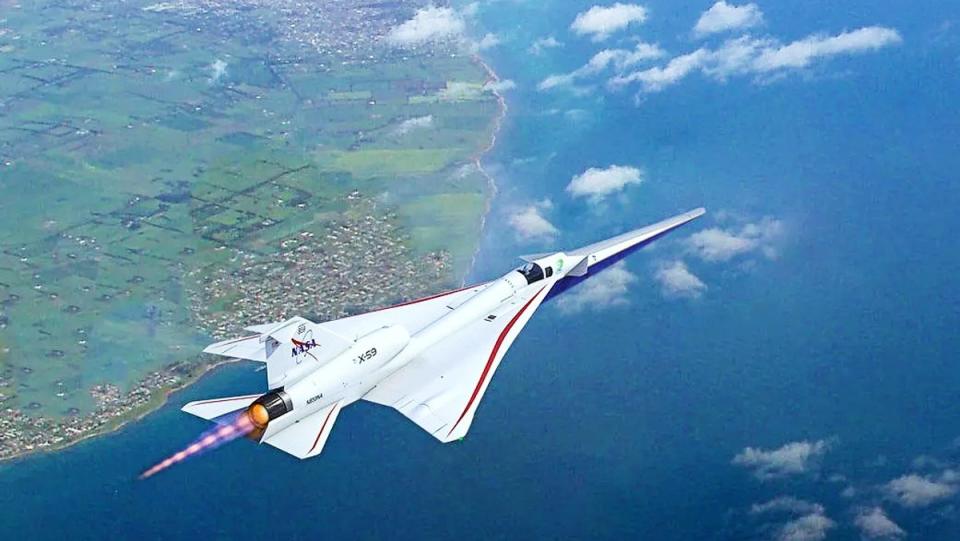
What kept supersonic transport programs like Concorde from reaching full potential forms the basis for a current X program, the X-59. The sonic boom created by flying above the speed of sound restricts these aircraft in many places from flight over land. That’s why Concorde flew supersonic mostly over the Atlantic.
The X-59 project—program name “Quesst”—get it, SST for “supersonic transport”?—intends to turn the “boom” into a mere “thump.” A joint program between NASA and Lockheed Martin will collect data on the quieter “boom” and deliver results to government and industry. “The concept for the Quesst program—along with so many other X projects—came from NASA,” says van der Linden.
Part of what’s new lies in the aircraft’s shape, which has been designed in such a way that the sonic waves created when the aircraft flies past the speed of sound never meet up to create the ear-splitting boom. Instead, there’s a “thump” that researchers hope will generate far less angst on the ground.
The engine propelling it to Mach 1.4? The F414-GE-100, close to the variant that powers the F-18 Super Hornet and JAS39E/F Gripen, with a fixed engine inlet and additional instrumentation. It’s 13 feet (4.0 m) long and produces 22,000 pounds-force (98 kN) of thrust.
The X-59’s first flight is projected for later in 2024. NASA provided an update to Robb Report on the program from Richwine, who also serves as the overall mission’s technical integration lead: “We’re getting ready to do an engine run in a couple of weeks, then taxi tests in a couple of months,” he says. Richwine has been on the project since conceptual design, which sought a uniform aircraft cross section to achieve NASA’s low-boom goals, while using a cost-effective approach to test the airframe shape and other details.
Key design elements include the eXternal Vision System (XVS), which gives pilots a view ahead using upper cameras mounted on the pointy nose. The XVS negates the need for a forward windshield and its associated weight and structural complexity. The plane is also equipped with a forward vision system (FVS) located below the fuselage and used for takeoff and landing.
The biggest surprise so far for Richwine?
“Just the sheer amount of integration of the outer mold line—every little detail talks to the other details,” he says. “If there is a problem at any point on the fuselage, it propagates forward and back.”
X-65: The CRANE
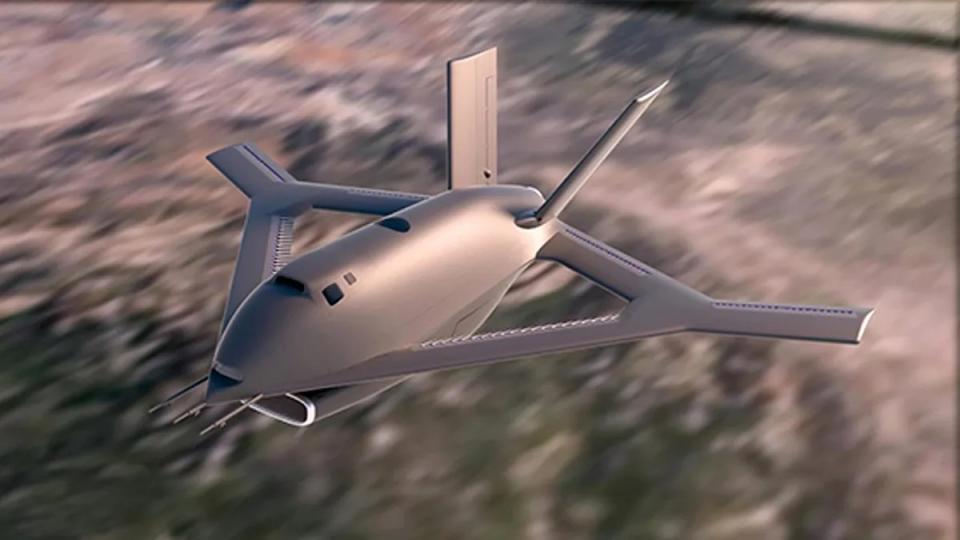
With the Quesst program, Lockheed Martin’s Skunk Works proves its longevity—and the place that X-planes have in the aerospace industry—and how they continue to shape our world. But Lockheed doesn’t have the only experimental test “hangar” out there. The Defense Advanced Research Projects Agency (DARPA) also plays a significant role in X projects.
You’ve maybe heard of directed thrust as a means for a takeoff—think about the AV-8B Harrier. Well, how about blown air as a way to replace traditional flight controls, like ailerons and elevators?
The CRANE project at DARPA aims to do just that. CRANE stands for “Control of Revolutionary Aircraft with Novel Effectors” with those “effectors” being 15 nozzles, or active flow control actuators, on the initial X-65 demonstrator aircraft. These nozzles direct jets of air to make changes in the aircraft’s attitude as well as making it turn.
The X-65 has a 30-foot wingspan and weighs 7,000 pounds, and it will fly in cruise up to Mach 0.7. It still has conventional control surfaces to use during initial flight testing—during which the team will use those to calibrate the AFC actuators, in both nominal and non-nominal conditions—like high crosswinds on takeoff, for example. Another outcome hoped for? The AFCs may also greatly reduce fuel consumption.
The projected aircraft completion date lies some time in September, with the first flight to follow.
X-66: Sustainable Future
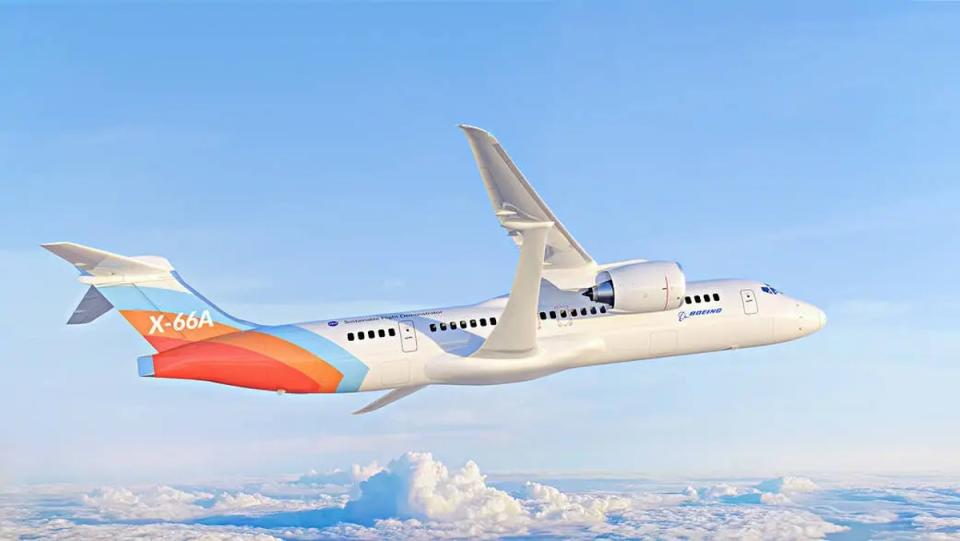
Back in the subsonic realm, the X-66 demonstrator intends to test the Truss-Braced Wing concept—which is essentially adding struts to a jetliner.
Several features highlight the aircraft’s importance as an X program, including the extra-long, thin wings stabilized by diagonal struts, advancements in propulsion systems, next-gen materials, and advanced systems architecture.
Richwine is familiar with the X-66 as well as the X-59—and the two programs dovetail in several ways. “This [X-66] configuration could result in up to 30 percent less fuel consumption and reduced emissions when compared with today’s best-in-class aircraft,” says Richwine. “It’s another derative of the original SUGAR configuration—’subsonic ultra-green aircraft’.”
In this instance, Boeing has been tapped to work with NASA to build, test, and fly the full-scale X-66 demonstrator—poised to show sustainable achievements in a single-aisle aircraft, which comprises the majoriity of aircraft used by passenger airlines globally.
An MD-90 jet will be transformed into the X-66 at Boeing’s facility in Palmdale, California. “The MD-90 is the platform; the technology on the aircraft is the important part,” says Richwine. “The truss allows for a longer, thinner wing that wouldn’t be able to survive by itself. Optically, it looks like a U-2 wing from above, featuring less drag and greater cruise efficiency than a typical passenger jet—but structurally sound.”

 Yahoo News
Yahoo News 
